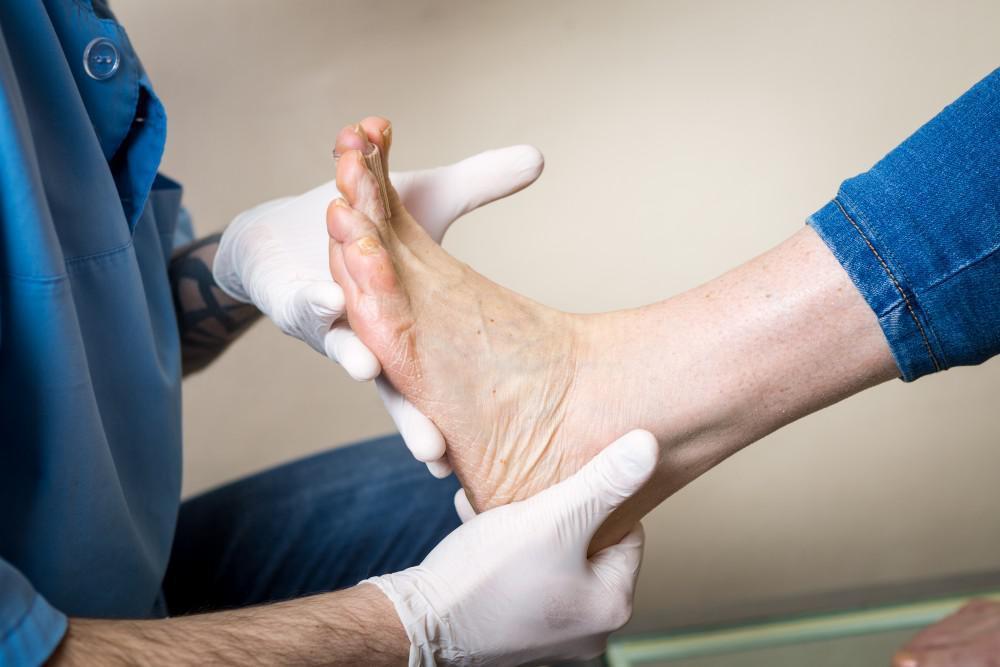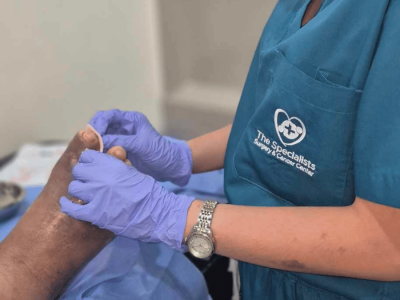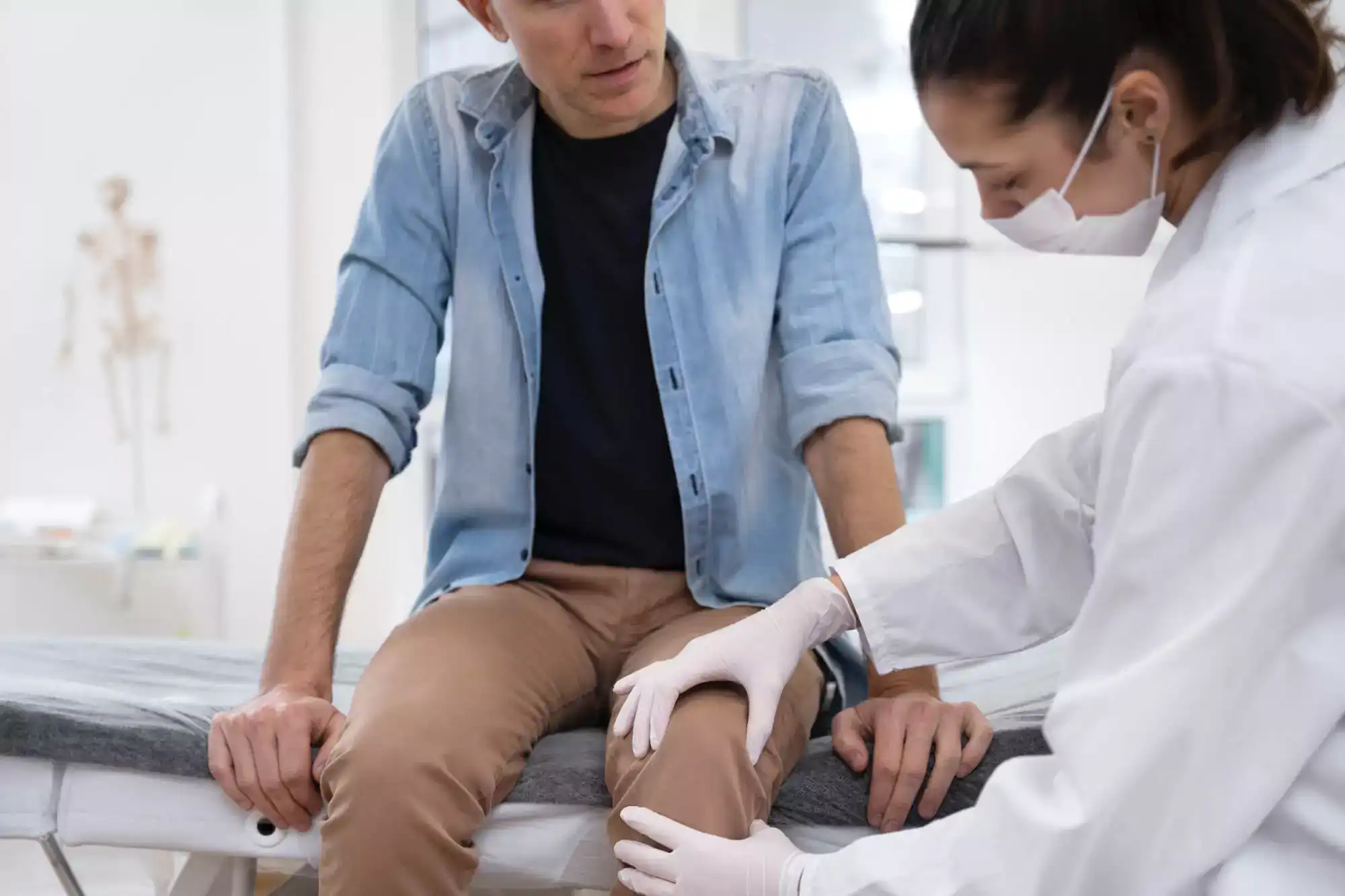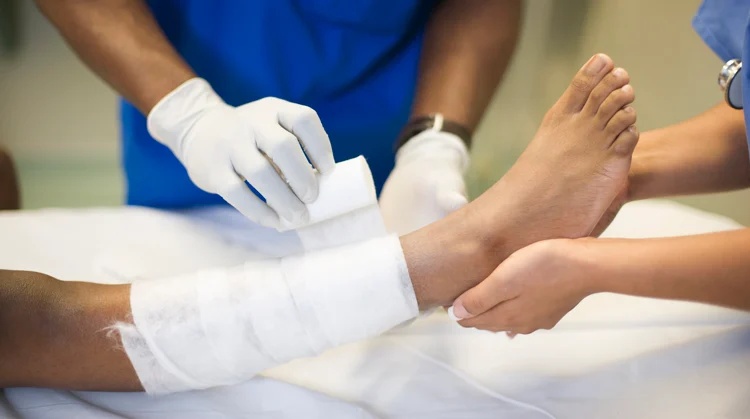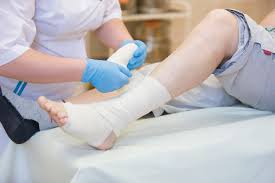Understanding Diabetic Foot Disease
Diabetic foot disease is a condition that develops when long-term diabetes begins to affect circulation and nerve function in the lower extremities. Elevated blood sugar levels can damage small blood vessels, leading to poor blood flow that slows the body’s ability to heal wounds. Nerve damage, known as diabetic neuropathy, can cause tingling, numbness, or even a complete loss of sensation in the feet. When patients cannot feel pain or discomfort, minor cuts, blisters, or sores often go unnoticed until they become infected. These infections may spread quickly due to impaired circulation, leading to chronic ulcers and serious tissue damage. Over time, the combination of nerve and vascular complications makes diabetic foot disease one of the most dangerous conditions linked to diabetes. Understanding how this disease develops and progresses highlights the urgent need for specialized care to prevent permanent disability.
The Role of Orthopedics in Managing Diabetic Foot Problems
Orthopedic specialists provide crucial expertise in managing diabetic foot disease because they focus on the bones, joints, and musculoskeletal system. Unlike general practitioners, orthopedists can detect subtle changes in foot structure and mobility that increase the risk of ulcers and deformities. Their role often begins with a detailed evaluation, which may include X-rays, MRI scans, or vascular studies to assess blood flow and bone condition. Since diabetic foot disease usually involves multiple factors, orthopedic care is often combined with podiatry, endocrinology, and vascular medicine for a team-based approach. This ensures that both the external symptoms and internal structural problems are addressed simultaneously. Orthopedic treatment helps restore balance, alignment, and stability in the foot, which is essential for preventing recurring injuries. With early intervention, patients benefit from a proactive plan that reduces pain, promotes healing, and preserves long-term mobility.
Key Orthopedic Treatments for Diabetic Foot Disease
Orthopedic treatment for diabetic foot disease includes both non-surgical and surgical approaches depending on the severity of the condition. Orthopedic footwear and custom orthotics are among the most common interventions, designed to redistribute pressure and reduce the likelihood of ulcers. Bracing and immobilization are often recommended when specific areas of the foot require relief from weight-bearing or when healing after an injury is necessary. For advanced cases, orthopedic surgeons may perform corrective procedures such as realigning bones, repairing tendons, or removing infected tissue. Reconstructive surgery can help restore function in cases of severe deformity, while procedures like skin grafting support wound healing. Patients with Charcot foot, a complication where the bones weaken and collapse, often benefit from specialized orthopedic stabilization techniques. By addressing both immediate and long-term concerns, orthopedic treatments provide comprehensive support that allows patients to maintain independence and avoid life-altering complications.
Preventing Severe Complications with Orthopedic Care
One of the most important goals of orthopedic treatment for diabetic foot disease is to prevent severe complications, including amputation. Orthopedic specialists closely monitor changes in bone health, joint alignment, and soft tissue to identify risks before they escalate. By correcting deformities and protecting vulnerable areas of the foot, orthopedists significantly reduce the likelihood of ulcers becoming deep infections. Physical therapy is also often part of the care plan, strengthening muscles and improving balance to reduce the risk of falls or new injuries. Regular follow-ups help track progress, ensuring that braces, footwear, or surgical interventions are working as intended. Preventive orthopedic care extends beyond treating wounds; it builds a foundation for ongoing mobility and quality of life. Patients who receive timely orthopedic attention are far more likely to avoid long hospital stays and maintain active lifestyles despite living with diabetes.
Lifestyle Practices That Support Orthopedic Treatment
Orthopedic treatment is most successful when supported by daily self-care practices at home. People with diabetes should examine their feet every day for cuts, swelling, or changes in skin color that may indicate poor circulation or infection. Washing feet with mild soap, keeping skin moisturized, and trimming toenails carefully help reduce the chance of injuries that could worsen. Proper footwear is another cornerstone of care, as diabetic shoes and seamless socks help reduce pressure points and prevent ulcers. Blood sugar management also plays a direct role in healing, as stable glucose levels improve circulation and tissue repair. Gentle exercise, when recommended by a doctor, helps strengthen bones, enhance flexibility, and improve blood flow. By combining orthopedic treatments with these daily habits, patients create a supportive environment that enhances healing and lowers the risk of recurring problems.
Innovative Orthopedic Advances for Diabetic Foot Disease
Modern advances in orthopedic care have transformed the treatment of diabetic foot disease, offering patients more effective and less invasive options. Custom 3D-printed orthotics and footwear now allow for precise support tailored to an individual’s unique foot shape. Minimally invasive surgeries are becoming more common, which reduce hospital stays, speed recovery, and lower the risk of infection. Orthopedic wound care has also improved, with technologies such as negative pressure wound therapy and bioengineered skin substitutes accelerating healing. Imaging advancements enable specialists to detect changes in bones and joints earlier, allowing for faster intervention. Regenerative treatments, such as stem cell therapy and tissue engineering, are also being studied for their potential to restore damaged tissues. These innovations provide hope for patients by improving outcomes and extending the range of options available for care. With these tools, orthopedic specialists can better preserve mobility, prevent amputations, and improve overall patient well-being.
Questions to Ask Your Orthopedic Specialist
Patients facing diabetic foot disease should actively engage with their orthopedic specialist to better understand their treatment options. One important question is which orthopedic treatment for diabetic foot disease is best suited to their condition, whether that involves braces, orthotics, or surgery. Patients may also ask how often follow-up visits or imaging will be needed to monitor progress. It is helpful to inquire about lifestyle changes that can enhance the effectiveness of treatment, such as specific footwear recommendations or exercises. Another valuable question involves understanding the risks and benefits of surgery compared to non-surgical methods. Since diabetic foot disease often requires collaborative care, patients can also ask how their orthopedic treatment will coordinate with other specialists. Having open and informed discussions with an orthopedic doctor empowers patients to take ownership of their health and encourages better long-term results.
Frequently Asked Questions (FAQ)
1. Can orthopedic treatment completely cure diabetic foot disease?
Orthopedic treatment cannot fully cure diabetic foot disease because it is rooted in long-term complications of diabetes. However, it can manage symptoms, promote healing, and significantly reduce the risk of severe outcomes such as amputation.
2. What is the difference between podiatry and orthopedic treatment for diabetic foot problems?
Podiatrists focus primarily on foot and ankle care, including routine procedures and maintenance. Orthopedic specialists provide more advanced care for bone, joint, and structural complications, often performing surgeries to address deformities or infections.
3. When should I see an orthopedic specialist instead of a general doctor?
Patients should consult an orthopedic specialist if they experience persistent foot ulcers, infections, or deformities. An orthopedist is especially necessary when there are signs of bone damage, Charcot foot, or severe alignment issues.
4. How effective are orthopedic shoes in preventing ulcers and deformities?
Orthopedic shoes and custom orthotics are highly effective in reducing pressure points, improving balance, and preventing ulcers. They are particularly important for people with diabetic neuropathy who may not notice small injuries.
5. Is surgery always required for severe diabetic foot conditions?
Surgery is not always required, but it is sometimes necessary when conservative treatments are not effective. Many patients find relief through braces, orthotics, and wound care before surgery becomes the recommended option.

